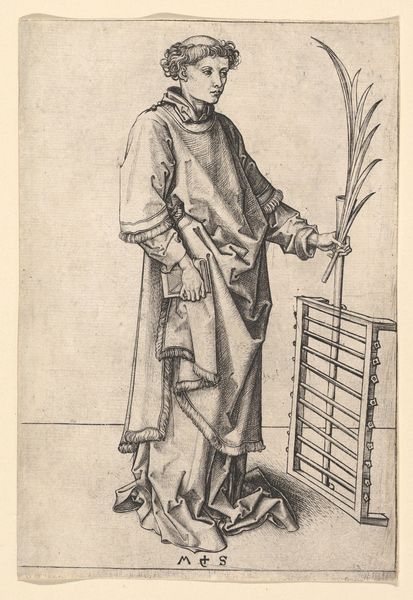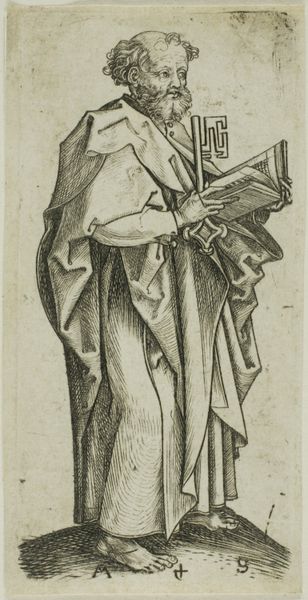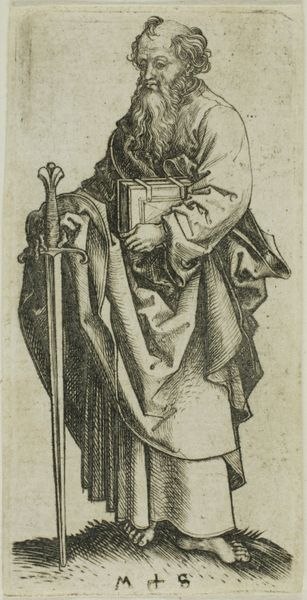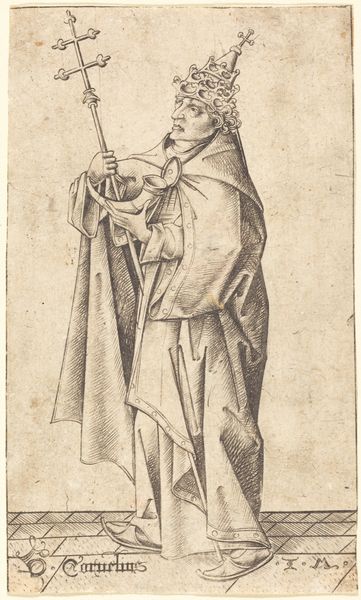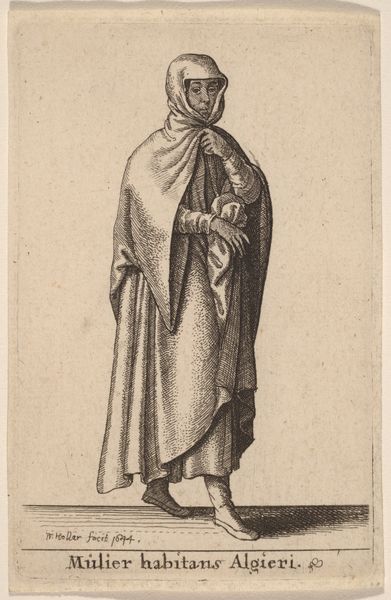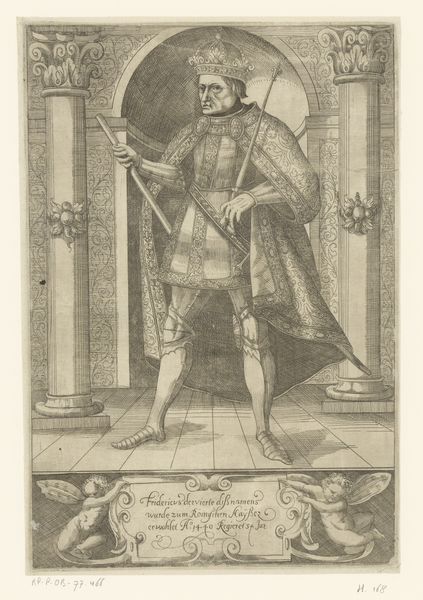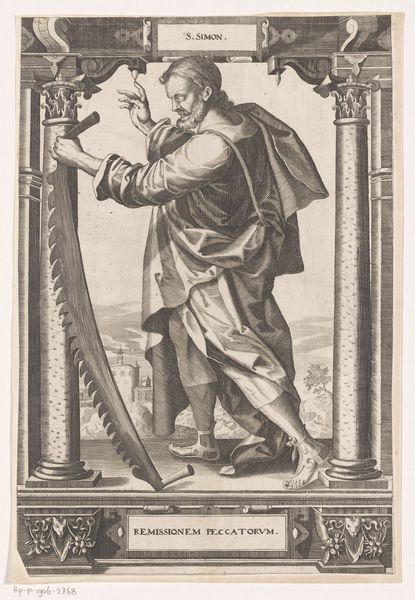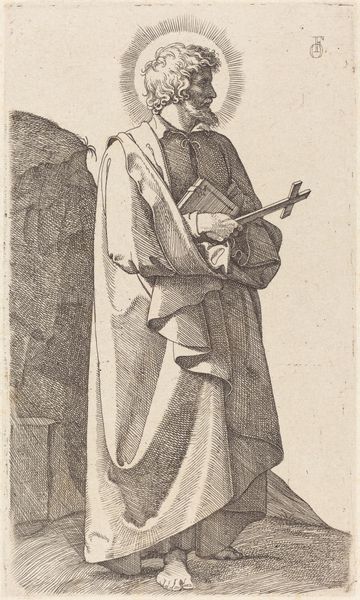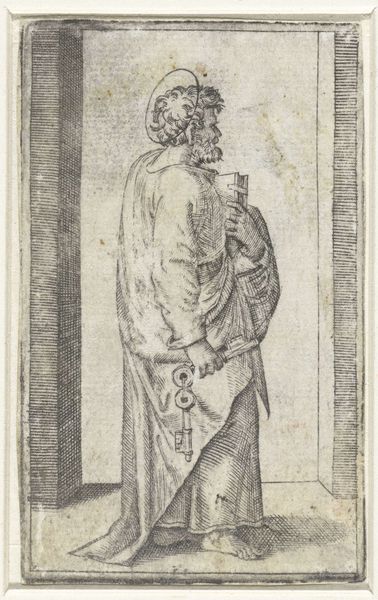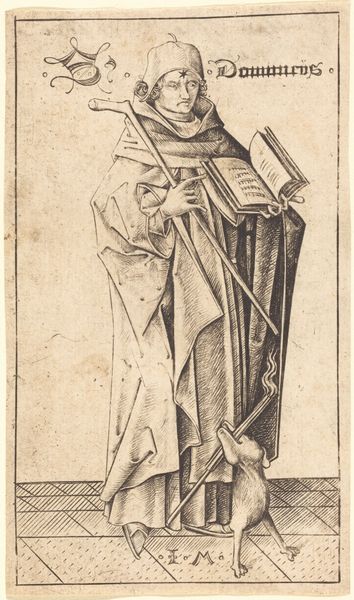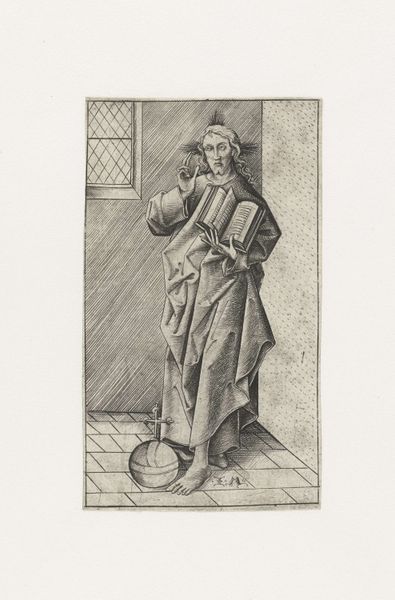
print, engraving
#
portrait
#
aged paper
#
baroque
# print
#
old engraving style
#
traditional media
#
figuration
#
history-painting
#
engraving
Dimensions: height 194 mm, width 108 mm
Copyright: Rijks Museum: Open Domain
This is Thomas Hirschmann’s etched portrait of Conrad Fürleger, made in Nuremberg, Germany in 1679. Fürleger served as captain during the city’s battles. But what can we learn about the city itself, and its relationship to this portrait? Nuremberg was a free imperial city, an autonomous state within the Holy Roman Empire. Its economic and political independence fostered a unique urban culture. Hirschmann was one of many artists who found patronage amongst the city’s merchant class. Fürleger, as a military leader, would have been part of a larger civic structure dedicated to protecting the city’s interests. The portrait then, becomes a record of Nuremberg’s social fabric. It is a window into the values of a society that celebrated civic duty. As historians, we consult city records, guild documents, and family histories to understand the dense web of relationships that gave meaning to portraits like this. The meaning of art is always contingent on its social and institutional context.
Comments
No comments
Be the first to comment and join the conversation on the ultimate creative platform.

